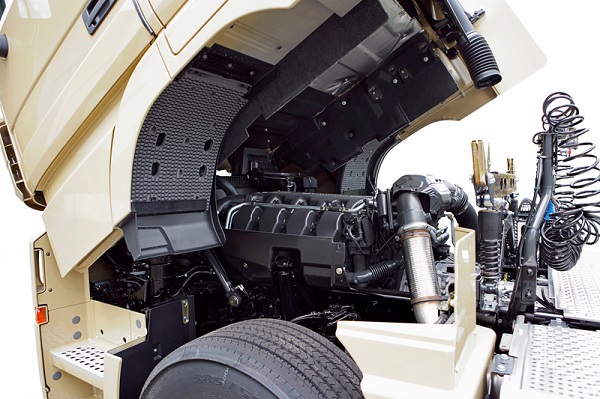
At last weeks meeting of the American Petroleum Institutes Lubricants Group in San Antonio, Texas, ballot results were announced for official adoption of categories CK-4 and FA-4 – the new heavy-duty engine oil categories, previously called PC-11, which have been in development since 2011.
For the record, the ballot results were as follows:

Photo: Thomas Lerch / Dreamstime
CK-4 and FA-4 are the new heavy-duty engine oil categories, previously called PC-11 during development.
- The use on product labels of API CK-4 and API FA-4 within the institutes trademarked donut symbol passed unanimously and without comment.
- User language defining the two new categories was approved for inclusion in API 1509, the legal document that governs the Engine Oil Licensing and Certification System. All but one ballot was submitted, and there was one comment to adjust some typographical errors in the table of test limits.
- The ballot approved Dec. 1, 2016 as the first date licensees can display the new categories in the API donut, also without comment and with all but one ballot submitted.
Chairman Scott Lindholm of Shell Global Solutions noted at the Feb. 10 meeting that the work by PC-11s New Category Development Team was complete and therefore the group could disband. He commended NCDT Chairman Dan Arcy of Shell and the rest of the team for successfully driving the development process to completion.
The new oils include one version (CK-4) that is backwards compatible with current heavy-duty categories such as API CJ-4, and another (FA-4) that is intended for use in model year 2017 and later engines.
The Approved User Language for publication in API 1509 states in part:
CK-4. API Service Category CK-4 describes oils for use in high-speed four-stroke cycle diesel engines designed to meet 2017 model year on-highway and Tier 4 non-road exhaust emission standards as well as for previous model year diesel engines. These oils are formulated for use in all applications with diesel fuels ranging in sulfur content up to 500 ppm (0.05% by weight). However, the use of these oils with greater than 15 ppm (0.0015% by weight) sulfur fuel may impact exhaust aftertreatment system durability and/or oil drain interval. . . .
API CK-4 oils exceed the performance criteria of API CJ-4, CI-4 PLUS, CI-4, and CH-4 and can effectively lubricate engines calling for those API Service Categories. When using CK-4 oil with higher than 15 ppm sulfur fuel, consult the engine manufacturer for service interval recommendations.
FA-4. API Service Category FA-4 describes certain XW-30 oils specifically formulated for use in select high-speed four-stroke cycle diesel engines designed to meet 2017 model year on-highway greenhouse gas (GHG) emission standards. These oils are formulated for use in on-highway applications with diesel fuel sulfur content up to 15 ppm (0.0015% by weight). Refer to individual engine manufacturer recommendations regarding compatibility with API FA-4 oils. . . .
API FA-4 oils are not interchangeable or backward compatible with API CK-4, CJ-4, CI-4 PLUS, CI-4, and CH-4 oils. Refer to engine manufacturer recommendations to determine if API FA-4 oils are suitable for use. API FA-4 oils are not recommended for use with fuels having greater than 15 ppm sulfur. For fuels with sulfur contents greater the 15 ppm, refer to engine manufacturer recommendations.
In addition to the ballot, the Lubricants Group addressed several other issues on the heavy-duty side. It discussed proposals for how to display the new categories within the donut, and API is to work on a comprehensive plan to help consumers differentiate between the two categories. It was also noted that viscosity grade read-across guidelines for two new engine sequence tests (the Volvo T-13 test for oxidation and lead corrosion, and the Caterpillar Oil Aeration Test) still must be balloted.
The spotlight moved the next day to light-duty needs, as the Automotive/Oil Advisory Panel convened on Feb. 11 to discuss the ILSAC GF-6 upgrade for passenger car engine oils.
Lindholm, who chairs this panel, noted that the proposed GF-6 timeline – with licensing to begin in second-quarter 2018 – represented the understanding of test development prior to last weeks meeting. After hearing discussions regarding the various GF-6 tests and their status, he felt that a revision was in order, especially since the schedule calls for all engine test development to be completed by May and it appears that some test procedures may not be done by then.
Lindholm asked members of ILSAC, the lubricants committee representing North American and Japanese automakers, to review their actual test status, and let him know if they would prefer to take more time for test development before starting precision matrices. If the answer is affirmative, that could potentially delay the first license date by a few months, making it June-August of 2018 versus the current April-May timeframe.